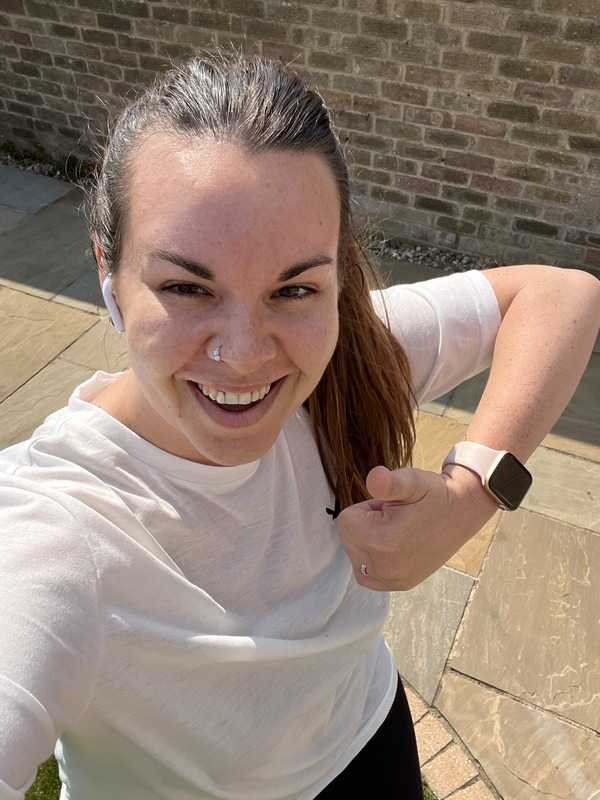Understanding Cellulite
Cellulite is a common, yet sometimes misunderstood, skin condition. Recognizing what causes cellulite and where it typically appears can empower you to address it more effectively.
Causes and Composition
Cellulite occurs when fat cells beneath your skin swell and push against the tissue, causing a dimpled or lumpy appearance on the surface. This is often due to:
- Genetics: Your genetic makeup can make you more predisposed to developing cellulite.
- Hormones: Fluctuations in hormones can contribute to the production and appearance of cellulite.
- Age: As you get older, your skin loses elasticity, which can make cellulite more visible.
The composition of cellulite includes:
- Fat Cells: The primary culprits that bulge and create the texture characteristic of cellulite.
- Connective Tissue: Rigid bands that pull on the skin and exacerbate the appearance of puckering.
Common Areas Affected
Cellulite can appear on various parts of the body but is most commonly found in areas with underlying fat deposits. These areas include:
- Thighs: A frequent site for cellulite due to a concentration of fat cells.
- Buttocks: Another common region where skin may show the dimpled appearance of cellulite.
- Hips: Cellulite may also be present here, as it is another area prone to fat accumulation.
Remember, the appearance of cellulite is a normal feature for many people, and several factors, including your genetics and age, play a role in its development.
Lifestyle and Diet Considerations
Managing cellulite involves a combination of healthy eating habits and consistent physical activity. Here’s how you can tweak your lifestyle and diet for better skin health.
Promoting a Healthy Diet
A balanced diet plays a crucial role in combating cellulite. Start by incorporating plenty of whole grains and foods rich in fiber which aid in maintaining stable glucose levels and help flush out toxins—factors that can reduce the appearance of cellulite.
- Fruits and Vegetables: High in nutrients and hydration, they support skin health and detoxification.
- Healthy Fats: Include sources like avocados that provide essential fatty acids and keep skin supple.
- Hydration: Aim for at least 8 glasses of water a day to keep your tissues well hydrated and reduce bloating, which can exacerbate cellulite.
Incorporating Regular Exercise
Physical activity is integral to improving circulation and toning the body, which can reduce the visibility of cellulite.
- Strength Training: Focus on exercises that target cellulite-prone areas to increase muscle tone and distribution.
- Cardiovascular Workouts: Activities like cycling, running or high-intensity interval training (HIIT) are effective at burning fat and boosting overall health.
- Consistency: Ensuring a regular workout schedule will amplify the benefits and aid in sustainable weight loss.
Remember, while you can’t control genetics, your choices of diet and exercise can influence the amount and visibility of cellulite.
Professional Treatments
When you’re considering professional treatments for cellulite, you have a variety of FDA-approved options that range from minimally invasive techniques to more intensive therapies. Dermatologists and cosmetic surgeons offer these treatments, ensuring safety and effectiveness.
Minimally Invasive Techniques
Cellfina™ is an FDA-approved, minimally invasive option you might consider. In this procedure, a needle is used to break up the connective bands that cause dimpling. You may see improvement in as little as three days, and the results could last up to three years.
Another method is subcision, where a dermatologist uses a needle to break up the skin’s connective bands. It’s a simple procedure that can provide results for up to two years.
Laser Therapy Options
The Cellulaze™ laser is the first FDA-approved treatment designed to break down fat under the skin while increasing collagen production. During this procedure, a small laser fiber is inserted beneath your skin to melt fat and release fibrous bands that pull on the skin.
Other laser therapy options include devices that combine laser energy with radiofrequency and massage mechanisms, which aim to reduce cellulite appearance by melting fat and improving lymphatic drainage.
FDA-Approved Interventions
QWO® is an injectable treatment recently approved by the FDA for the treatment of moderate to severe cellulite in the buttocks of adult women. It works by dissolving the fibrous bands and redistributing fat cells.
For fat removal, liposuction might be recommended, but it is important to note that liposuction alone is not often used for cellulite and might sometimes worsen its appearance.
Cryolipolysis, also known as “CoolSculpting”, is FDA-approved for fat reduction and may marginally improve cellulite by reducing the amount of fat pushing against the skin.
Lastly, endermologie is a deep massage treatment that typically requires multiple sessions. It’s not FDA-approved specifically for cellulite reduction but is sometimes used for this purpose.
At-Home Remedies and Skincare
Incorporating topical treatments, exercise, and consistent skincare can help minimize the appearance of cellulite from the comfort of your home.
Topical Creams and Products
- Caffeine-infused creams: Caffeine is known to help tighten skin and reduce puffiness due to its diuretic properties. Applying caffeine-infused creams can help temporarily make your skin look smoother.
- Retinol cream: Over time, products containing retinol can improve skin texture by increasing collagen production. Aim for retinoid creams with at least 0.2% retinol for best results.
Physical Activities and Exercises
- Strength training: Focus on exercises that build muscle in cellulite-prone areas like squats, lunges, and leg presses.
- High-intensity workouts: Engage in routines that combine cardiovascular and strength training to burn fat and build muscle simultaneously.
Daily Skincare Routine
- Dry brushing: This technique stimulates blood flow and lymphatic drainage, which may help to reduce the look of cellulite. Use a body brush in circular motions on dry skin before showering.
- Hydration: Keep your skin hydrated with moisturizers which can help to improve skin elasticity.
- Self-tanner: Applying a self-tanner can help to camouflage cellulite by darkening the skin and providing a uniform skin tone.
Understanding and Managing Expectations
When it comes to reducing cellulite, it’s crucial for you to understand that results can vary and patience is key. Let’s explore how to set achievable goals and what lifestyle changes can make a tangible difference over time.
Setting Realistic Goals
Cellulite is a common concern, yet it’s important to know that total elimination may not be feasible. Recognizing what treatments and actions can realistically achieve will help you set goals that are attainable. Aim for improved texture and skin firmness rather than complete removal. Progressive improvement should be the focus, where treatments like acoustic wave therapy or laser procedures, such as Cellulaze™, may visibly reduce the appearance of cellulite by thickening the skin.
- Be Patient: Results from treatments are not immediate and may necessitate multiple sessions.
- Consistency is Key: Both in treatments and in continued care, consistency will yield the best results.
Long-Term Lifestyle Adoption
Integrating sustainable lifestyle changes is fundamental in managing cellulite effectively. A holistic approach will be your strongest ally:
- Diet: Incorporate a balanced diet rich in fruits, vegetables, and whole grains.
- Exercise: Regular physical activity, particularly strength training, can help improve circulation and firm the areas affected by cellulite.
- Skincare: Products containing caffeine or retinol may firm the skin to reduce the puffiness associated with cellulite.
- Hydration: Keeping your skin hydrated aids in maintaining its elasticity, which can diminish the dimpling effect.
Remember, the success in reducing cellulite often lies in a combination of treatments complemented by your lifestyle choices. It’s all about the journey, not a sprint to the finish line.
Questions to Ask Your Dermatologist
Selecting the right treatment for cellulite can be confusing, but a candid conversation with your dermatologist can help clarify your options. Focus on understanding what to expect and how you can maintain the results.
Before Starting a Treatment
When you’re considering treatment options, it’s essential to discuss the expected outcomes, potential risks, and costs with your dermatologist. Here are specific questions you might find useful:
- What type of cellulite treatment would you recommend for my specific case?
- Can you outline the risks and potential side effects of the recommended treatment?
- What kind of results can I realistically expect?
- How many treatment sessions will I need?
- What are the costs involved, and is it covered by insurance?
- Are there any preparations I need to make before undergoing treatment?
- How long do results typically last with the recommended treatment?
For Continued Care and Maintenance
Keeping your skin healthy and maintaining the results of your treatment requires consistent care. Here’s what to inquire about ongoing care:
- What can I do to maintain the results of my cellulite treatment?
- Are there specific lifestyle changes that could improve my skin health?
- Do you recommend any follow-up treatments or maintenance sessions?
- What skincare products or routines do you suggest to support the treatment effects?
Remember, effective communication with your dermatologist will not only enhance your understanding but help you make informed decisions about your skin health and treatment options.




